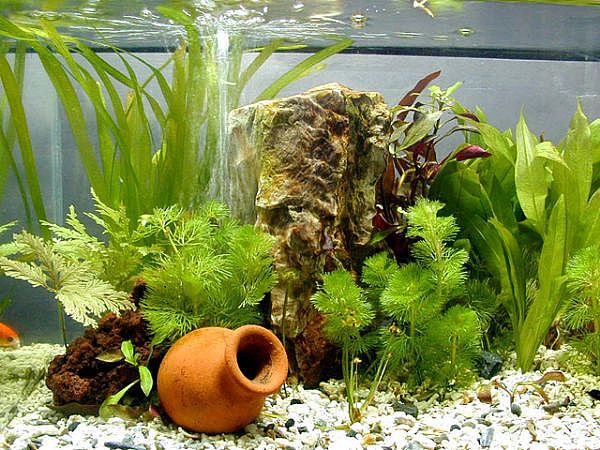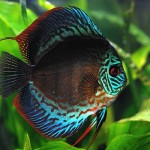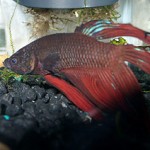When planning an aquarium, one of the key elements you will need is a large variety of aquarium plants. Aquarium plants are not only pleasing to look at but they also serve an essential function in your aquarium. They come in several different types and there are some basic guidelines that will help you choose the best plants for your aquarium. When you are planning the environment for your fish, having a basic understanding of aquarium plants will help to make your efforts a success and allow you to provide the best possible environment for your fish.
Aquarium Plants
Having an adequate selection of aquarium plants in your fish tank or aquarium is one of the best choices you can make for the wellbeing of your fish. They help to mimic your fish’s natural environment as well as providing several other essential functions. Some of the benefits that aquarium plants provide include improving the water quality by allowing for natural biological filtration. They also remove nitrates from the water and work to oxygenize the water resulting in healthier fish. Aquarium tanks with plants have fish which are calmer and exhibit reduced signs of stress as well as increasing their likelihood of breeding.
Once you have decided that adding aquarium plants to your aquarium is the healthiest option for your fish, you can then go about selecting which plants you would like to include. When first starting out, it is important to start with a large quantity of plants at once. This will ensure that there are more plants than algae in the fish’s environment. Having a large density of plants in the aquarium tank will ensure that the algae present do not absorb more nutrients than the plants. This is the main reason that aquariums which a small amount of plants do not flourish. Large quantities of plants can be obtained at club auctions at very reasonable prices.
A Variety Of Plants
When selecting your plants, there are a variety of available species to choose from. The best species for a first time planting are those that are relatively cheap and fast growing. This will ensure that your aquarium tank will be ready in as short a time as possible. Species to choose from include Vallisneria, Cabomba, Hygrophilia and hornwort. When selecting your plants, it is important to inspect them for snails and snail eggs. The best plants to start with that are guaranteed to be virtually free of snails are Hygrophilla lacustris (willowleaf hygro) and Nomaphila stricta (temple plant).
Adding Your Plants To Your Tank
Before installing the plants you have selected, you should make sure they are in pristine condition for the best health of the aquarium. This can be easily done by pruning your plants before placing them into the tank. To best prune your plants, you should remove any aging and yellowing leaves with a small pair of scissors or gardening shears. When pruning rooted plants, you can remove any visible soft brown roots as well as trimming any white roots that show up on the plant. If installing stem plants, you can make a fresh cut in the stem before planting.
Once your plants have been properly pruned, you can then go about setting them inside the tank. This is best done with a half filled tank for greater ease and efficiency. Make a small hole for the plant you are working with and then insert the plant into the hole while placing gravel over the roots as any exposed roots may be attacked by fur algae. The new plants may take some time to get settled and properly rooted so try to avoid moving them unless absolutely necessary as it takes a while for a plant to recover from a move. Your newly placed plants will need a very specific environment to ensure their optimal development. Algae can easily overtake a newly planted tank if there are elements within the environment which are out of balance. Any lights should be placed on a timer with a rotating daily cycle of eight to ten hours. The lights should be reduced if any excess of algae begins to form. Once this environment has been properly established, a lighting cycle of ever ten to twelve hours per day will suffice.
You may have a selection of fish that you will like to introduce to your tank right away, however this may not be best. The ideal starter fish for a new tank are those that can eat algae immediately as it shows up such as mollies, flying foxes, and certain types of catfish. More fish can be added at a later date; however special attention should be paid to the amount of fish in relation to plants to ensure the highest water quality possible.
Regular upkeep of your plants will also guarantee that your fish remain as healthy as possible. To maintain the health of your plants, you should prune them regularly making sure to remove any old and damaged leaves. In the case of floating plants or stem plants, these should be thinned out to avoid any overcrowding that may occur in the tank. Overcrowding from stem and floater plants can cause a diminished light stream which would negatively affect the aquarium’s environment. Pruning stem plants will also result in doubling at the point of each node which will cause thicker, lusher plants to grow in. Pruning can be done on an as needed basis by performing a perfunctory check of the state of your aquarium plants on a regular basis.
Aquarium plants will add a breath of fresh air to your tank, literally. Not only will they enhance the visual appearance of your fish’s environment but they will also aid in maintaining the health of your fish and limiting the overgrowth of algae in your tank. Aquarium plants are an essential element of any aquarium tank. By selecting the best plants for your tank, providing adequate lighting, and maintaining your plant’s health through regular pruning, your aquarium planting success is virtually guaranteed.
Source: freshwater tropical fish

















hai…………
inform about the aquarium plants and more details about it and i kindly request you.
good it is good idea to planting inside the aquarium,but in my aquarium I m always failed for planting,I used to plant amazon sward,cocomba plants but it was not success.
sandeep